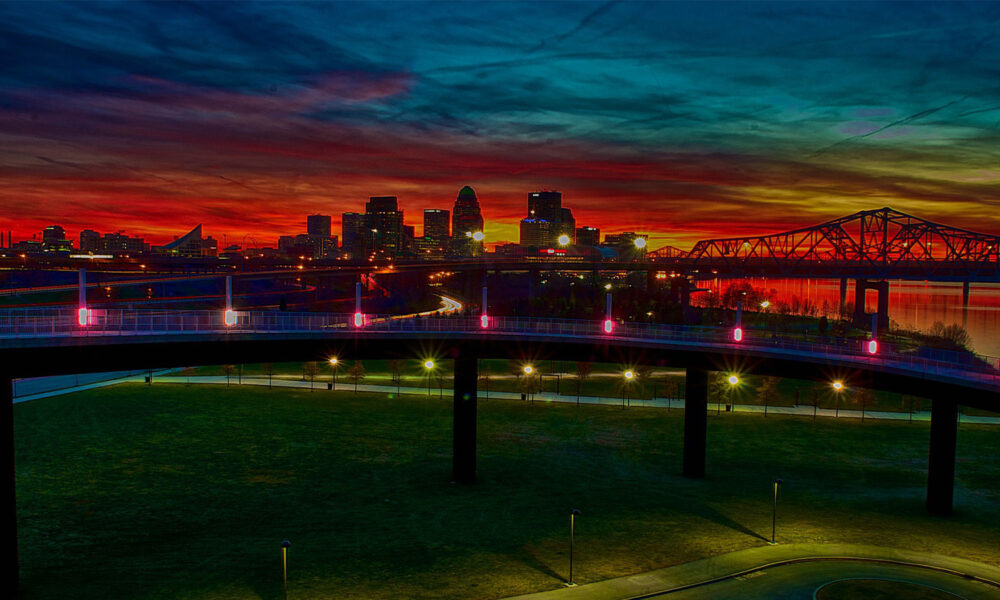When I think about summer, I think of the carefree days I spent playing kickball, kick-the-can, and tag with the kids in my neighborhood. We would run around all day until we finally needed to cool off, which meant we would go to whoever’s house had the most sodas, ice cream, or popsicles.
“Keep the door closed, we can’t afford to cool down the whole neighborhood,” a parent would often yell when we inevitably threw our bikes down and ran through the front door and straight for the fridge.
This same scene still plays out in homes around the country, but today’s summer is already different. And not only different, but dangerous. So much so that we at UCS are calling it Danger Season.
Just last week I went without electricity and air conditioning for over 8 hours on a day when the heat index reached over 105°F.
Historically, Louisville, KY experienced just one day in the average year with a heat index above 105°F. But, according to UCS research, Louisville can expect 27 days per year—basically, a month’s worth!!!—with a “feels like” temperature that’s above 105°F by midcentury. This is slightly higher than my hometown in Boone County, KY, which can expect 18 days per year on average above 105°F if we don’t take action to reduce heat-trapping emissions.

Temperatures that hot aren’t just uncomfortable, they are downright dangerous and can be deadly.
When hot temperatures combine with high humidity, our bodies are not able to stay cool and it can lead to symptoms that are relatively mild but can quickly escalate to a life-threatening scenario.

The not-so-distant future
When I first read the UCS Killer Heat report in 2019, I put my head in my hands and closed my eyes. I envisioned what these numbers mean for my young nieces and their future. However, I sit here today and it really sinks in that it isn’t only a future problem—it is here, and it is now. And after cursing into my coffee morning, I started writing this blog post.
I experienced a sticky, miserable, and frightening sample of the future of extreme heat last week. Without electricity, our home reached 87°F. I was sweating just sitting on my couch. It was hard to concentrate and, to be honest, my spouse and I were super irritable and quick to argue. Even with two fans, we both found it too hot to sleep well the night before. And the science shows that nights are already warming faster than days. “But when nights remain hot, health risks and heat-related deaths rise because our bodies are unable to shed the extra heat they’ve accumulated during the day,” my colleague Kristy Dahl wrote in a recent blog post.
Fortunately, my electricity was off because electricians were updating the panel to increase the capacity—not because of a power outage. I thought our timeline to replace our inefficient air conditioner would get us ahead of extreme heat. But severe heat came early this year and blasted Louisville with two weeks of high temperatures—prompting emergency warnings and air quality alerts.

Carefree to cautious
I’ve written before (here) about my sensitivity to the heat and my concerns for family members and vulnerable people when the heat index is high. Gone are my days of carefree childhood summers, and now Danger Season puts me on edge. I start to think about the powerful storms that can knock out electricity, leaving people to suffer in their homes without cooling, refrigeration, or access to medical devices. I think about people who are unhoused and unsheltered, and how challenging it is to stay cool and hydrated. I think about how inequities compound the harms of climate change, and the word I learned from my friend Dr. Adrienne Hollis—“syndemic”—when she wrote how the COVID pandemic makes it even harder to find places to cool down or seek shelter because of the risk of infection. Places like the library, a movie theater, a cooling center, or a friend or relative’s house.
If storms don’t knock out the power, it’s possible that our outdated electric grid could fail when temperatures are high and commercial and residential users are running their ACs at full blast.
What can we do about it?
Ensure access to cooling to protect public health.
I was pleased that Louisville Gas and Electric decided to temporarily suspend disconnects due to nonpayment during the dangerous heat days in June. We know that many people cannot afford air conditioning, cannot afford to run one if they have it, and must make impossible choices between staying cool, keeping the water on, or buying food. Heat is the silent killer, but we know that heat illness and death are preventable. We need policies in place to permanently protect people from having their utilities turned off. No one should suffer extreme heat because they can’t afford to pay their utility bill.
Incentivize residential electrification powered by clean energy
By 3:00pm on Wednesday, July 6, the “feels like” temperature reached 111°F in Louisville. The inside temperature of my house was at least 87°F. I was having a heat pump installed and could not wait for it to be ready to turn on because, despite its name, a heat pump heats and cools a building.

“Upgrading from gas appliances to energy-efficient electric alternatives, including switching from gas furnaces to heat pumps, can reduce residential exposure to expensive gas prices and provide long-term consumer savings,” my colleague Ashtin Massie wrote in her May blog post.
And, because my home has solar panels, a heat pump was a smart choice to reduce my energy costs and my reliance on fossil fuels. I acknowledge my privilege and am fortunate to have the financial means and access to credit union financing. By Thursday morning my house had cooled to 70 degrees, and I woke up finally feeling relieved. Making the switch to electrify homes and buildings plays a big part in reducing greenhouse gas emissions. And it isn’t, and shouldn’t be, only on individuals to make these personal choices to help cool our planet.
Make big national investments for climate action and resilience
Congress must pass a reconciliation bill this summer that includes significant investments in electrification, environmental justice, and climate resilience.
If we take bold climate action now and rapidly reduce the reliance on fossil fuels, the future frequency of extreme heat days can be limited. Here in Jefferson County, KY that would mean we can expect around 16 days per year with a heat index above 105°F instead of 26 days by midcentury or even 58 days on average by late century.
The hard truth is that because of decades of fossil fuel deception and ramping up the use oil and gas—despite knowing it would warm our planet—we are locked into summers with more frequent severely hot days. That’s why our choices today matter. We must build climate resilience by reducing greenhouse gas emissions and by putting measures in place to ensure the most vulnerable and historically neglected people in our country are able to stay safe, cool, and healthy. We must do both.
Act now
Kick-the-can is fun as heck when you’re a kid, but when you’re a member of a consequential decision-making body like the US Congress, kicking the can and delaying on climate action puts real lives at stake.
Find out how hot it’s likely to get where you live by using this tool. Then, join me in telling our Senators that delay is deadly and the time to act is now.

